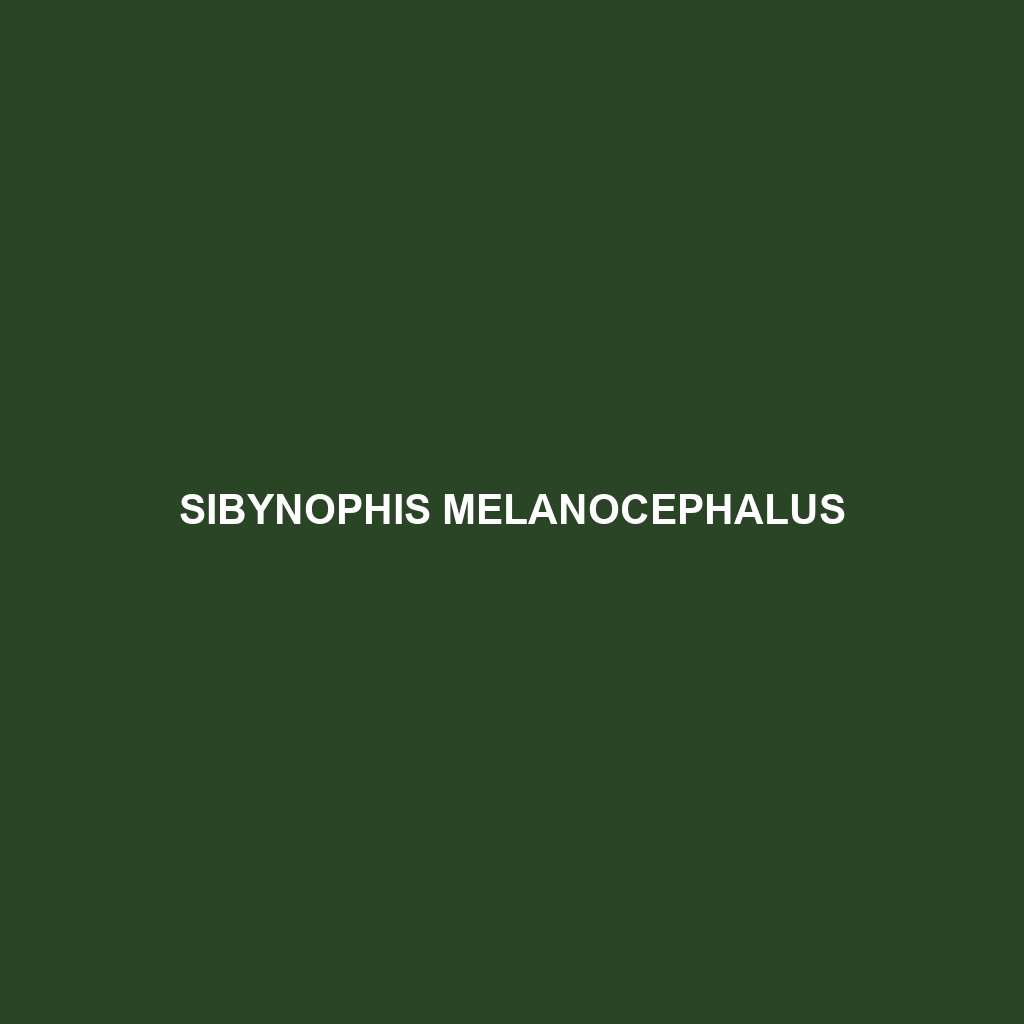Common Name
Sibynophis melanocephalus
Scientific Name
Sibynophis melanocephalus
Habitat
Sibynophis melanocephalus, commonly known as the black-headed snake, is primarily found in various habitats that span across regions in Southeast Asia. This species prefers humid environments, often inhabiting lush rainforests and nearby areas rich in vegetation. The geographical range includes countries such as Thailand, Malaysia, and Indonesia, where tropical climates provide the warm temperatures and moisture that Sibynophis melanocephalus thrives in. Additionally, this snake can be spotted in temperate forests and savannas, utilizing the dense underbrush for shelter and hunting. These diverse habitats support the ecological needs of the species, allowing it to remain active and engage in its typical behaviors.
Physical Characteristics
Sibynophis melanocephalus exhibits several distinct physical traits that set it apart from other snake species. Adults typically reach lengths of 70 to 100 centimeters, with a streamlined body that showcases a distinctive coloration. The most prominent feature is its glossy black head, which contrasts sharply with its lighter, often patterned body. The dorsal side may display shades of gray, brown, or tan, often enhanced with subtle markings that assist in camouflage among the forest floor debris. Unique to Sibynophis melanocephalus is its large, prominent eyes that enhance its vision, making this species particularly adept at spotting prey in low-light conditions.
Behavior
Typically, Sibynophis melanocephalus is a nocturnal creature, engaging in most of its activities at night. This behavior not only reduces competition for food but also aids in avoiding potential predators. Their social interactions tend to be solitary, with snakes coming together primarily during mating season. Notable behaviors include a unique method of hunting; rather than actively foraging, these snakes may ambush their prey from concealed spots. Mating rituals are fascinating and involve intricate courtship displays, where males may engage in a form of combat to secure breeding rights with females. This species also exhibits significant adaptability to varying environmental conditions, allowing it to thrive in diverse habitats.
Diet
Sibynophis melanocephalus is primarily carnivorous, feeding mainly on small rodents, lizards, and a variety of insects. It has developed excellent hunting skills, utilizing its keen eyesight and sense of smell to locate prey. The snake employs a striking technique to subdue its prey, delivering a quick bite before swallowing it whole. Studies indicate that local populations may show variations in dietary preferences based on seasonal food availability, showcasing the species’ adaptability and resourcefulness as a predator. This dietary versatility ensures Sibynophis melanocephalus remains a vital component in its ecosystem, regulating populations of smaller species.
Reproduction
The reproductive cycle of Sibynophis melanocephalus is fascinating. Mating typically occurs in the spring, with peaks in activity observed during humid, warm conditions ideal for reproduction. After mating, females usually lay clutches of between 5 to 10 eggs, which they deposit in sheltered locations to protect them from predators. The eggs have an incubation period of approximately 60 to 70 days before hatching. Newly emerged snakes are independent and capable of hunting for themselves, but they may rely on the cover of the dense vegetation for safety in their early stages of life. Parental investment is minimal, with adults often leaving the eggs to fend for themselves.
Conservation Status
As of the latest assessments, Sibynophis melanocephalus is classified as ‘Least Concern’ on the IUCN Red List. However, environmental changes, deforestation, and habitat loss due to agricultural expansion pose significant threats to its populations. Conservation efforts are crucial to maintain the stability of their habitats. Organizations are working on initiatives to mitigate habitat degradation and promote awareness of the importance of preserving these ecosystems. Continued monitoring of their populations is essential to ensure that Sibynophis melanocephalus remains a stable part of its natural habitat.
Interesting Facts
One of the most intriguing aspects of Sibynophis melanocephalus is its remarkable ability to adapt to different environments. This adaptability can be seen in the slight variations in coloration and size across different geographic regions. Additionally, the snake’s unique method of ambush hunting showcases its evolutionary advantage in predator-prey dynamics. There are anecdotal reports of this species exhibiting defensive behaviors, such as flattening its body and displaying its black head to appear larger to potential threats.
Role in Ecosystem
Sibynophis melanocephalus plays a significant role in its ecosystem. As a predator, it helps regulate the populations of smaller mammals and insects, maintaining a balanced food web. Such predatory behavior prevents overpopulation and promotes healthy biodiversity. Moreover, as both prey and predator, Sibynophis melanocephalus is integral in nutrient cycling within its habitat. Its presence indicates a healthy ecosystem, and the conservation of this species supports not only its survival but also the broader ecological community it inhabits.
